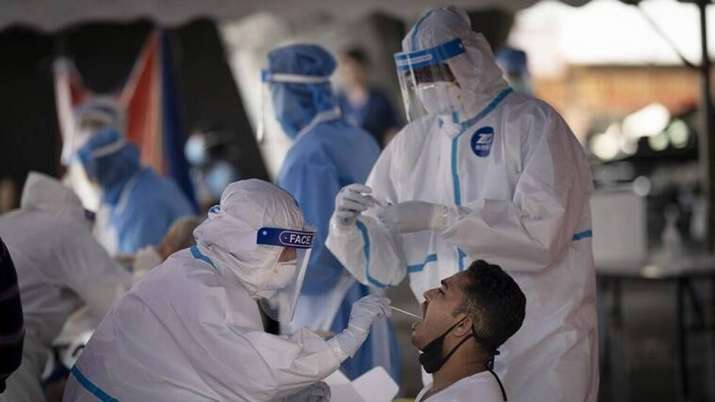PCR is an acronym for a polymerase chain reaction. PCR is a molecular diagnostic testing technology that has been around for a long time and is used to detect or target a genetic sequence of DNA or RNA (e.g., in bacteria, viruses, or even animal and plant research) in a sample. PCR is a valuable yet straightforward scientific discovery, and every biology enthusiast has heard about it. Well, for those who don’t, you’re lucky because Modern Biology Inc has got your back.
What is a PCR Test?
Simply put, PCR is a technique for studying an enlarged DNA sample amplified into millions of copies from a specific DNA sequence. It’s an essential step in molecular biology and genetics.
The term “chain reaction” usually refers to amplifying or photocopying the amount of DNA in a sample 40 times, which takes between 40 and 85 minutes. If a single strand of targeted DNA is present, and each strand has a photocopy throughout each of the 40 PCR cycles, a single strand of DNA should yield more than 1 trillion copies at the end of PCR (assuming a 100% efficient reaction (=240). That is what gives PCR its incredible sensitivity.
The fundamentals of all PCR tests are the same regardless of the DNA sample. To set up a PCR, you’ll need five basic “ingredients”:
- The DNA sample to be amplified.
- Primers are short segments of DNA that start the PCR process, and the design is to bind to both sides of the DNA segment you wish to duplicate.
- Nucleotide bases in DNA (also known as dNTPs) that build blocks of DNA (A, C, G, and T) have to form the new DNA strand.
- To complete the setup DNA bases, you add the Taq polymerase enzyme.
- A buffer is used to ensure that the reaction takes place in the best possible conditions.
A thermocycler with an optical system for collecting fluorescence and a computer with software capable of recording the data and conducting the final analysis of the reaction are both required for Real-Time PCR. The PCR process involves the following processes:
- Denaturation: At this stage, the two strands of the DNA double helix must be split, much like DNA replication. The hydrogen bonds linking the complementary DNA strands break down as the mixture’s temperature rises, causing the separation. Denaturation is the term for this procedure.
- Annealing: Primers bind to target DNA sequences and start the polymerization process. Only once the temperature of the solution has been reduced can this happen. A single primer binds each strand.
- Extension: The original DNA strands are used as templates to create new DNA strands. Free DNA nucleotides are joined together by a DNA polymerase enzyme.
One PCR cycle produces two double-stranded target DNA sequences, each with one freshly synthesized strand and one original strand. Because most PCR techniques require significant amounts of DNA, the cycle is done numerous times (typically 20–30). Getting millions of copies takes about 2–3 hours.
What is a PCR Test Used for?
PCR offers a wide range of applications, including medical diagnostics, forensics, and agriculture, in addition to basic research. The following are some instances of PCR uses that are revolutionizing the world and influencing our perspectives of life:
Gene expression
PCR is often used to investigate variations in gene expression across cell types, organs, and species at a given time. The messenger RNA (mRNA) is reverse transcribed into complementary DNA in this process, which requires RNA extraction from the samples of interest (cDNA). The amount of cDNA produced in PCR can then determine the original amounts of mRNA. Reverse transcription PCR, or RT-PCR, is another name for this procedure.
Genotyping
Detecting sequence changes in alleles in specific cells or organisms can be done with genotyping PCR. Genotyping of transgenic species such as knock-out and knock-in mice is one example. The primer sets are designed to flank the regions of interest and analyze genetic variants based on the existence or absence of an amplicon and the length of the amplicon. It’s for detecting mutations occurring in cancers.
Cloning
In a process known as PCR cloning, PCR is commonly used to clone DNA segments of interest. Direct PCR cloning entails amplifying and inserting the desired section of a DNA source (e.g., gDNA, cDNA, plasmid DNA) into specifically designed suitable vectors. Primers could also be created with extra nucleotides at the 5′ end to allow more modification before insertion. These add-on sequences include restriction sites for cloning by vector-compatible sequences for ligation-independent cloning, restriction digestion and ligation, and recombination sequences for multi-fragment assembly.
Mutagenesis
Mutagenesis is one of the advantages of PCR cloning since it allows you to clone desired mutations into the gene of interest for mutagenesis investigations. When it comes to site-directed mutagenesis, PCR primers design integrates base changes, deletions, or insertions within a specified sequence. Primers target a sequence that has already gotten cloned in a plasmid. The PCR product with the inserted mutation is then self-ligated to create a circular plasmid, transforming competent cells.
Methylation
PCR is used to explore locus-specific methylation, and Two primer pairs develop to discriminate the methylation state of the locus of interest in a process called methylation-specific PCR (MSP).
Sequencing
PCR is a straightforward method of enriching template DNA for sequencing. To maintain DNA sequence accuracy, high-fidelity PCR is recommended for the creation of sequencing templates. PCR-amplified fragments are purified and submitted to the sequencing processes. PCR primers can be tagged at their 5′ ends with a commonly used binding site for sequencing primers such as M13 or T7 “universal primer” binding site, to facilitate the sequencing process.
PCR is commonly used to build DNA sequencing libraries in next-generation sequencing (NGS). DNA samples are enhanced by PCR (when the initial quantity is restricted), and tags are added to NGS libraries. PCR-based technologies are employed every day in clinical diagnostics, criminal investigations, and agricultural biotechnology, in addition to basic research. These applications necessitate consistent performance, high sensitivity, and adherence to strict specifications.
As a result, heat cyclers and reagents must meet these requirements and be built for them. Genetic testing, the detection of oncogenic mutations, and infectious disease testing are all examples of molecular diagnostics. Human identification by PCR in forensics relies on amplifying distinctive short tandem repeats on gDNA to distinguish individuals.













